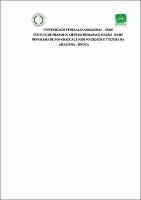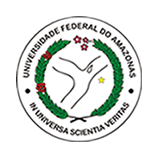| ???jsp.display-item.social.title??? |


|
Please use this identifier to cite or link to this item:
https://tede.ufam.edu.br/handle/tede/11061Full metadata record
| DC Field | Value | Language |
|---|---|---|
| dc.creator | Dantas, Ciro Braga | - |
| dc.creator.Lattes | http://lattes.cnpq.br/6031335201009739 | eng |
| dc.contributor.advisor1 | Fernando, Adelson Costa | - |
| dc.contributor.advisor1Lattes | http://lattes.cnpq.br/4220610766970297 | eng |
| dc.contributor.referee1 | Vasconcelos Neto, Agenor Cavalcanti de | - |
| dc.contributor.referee1Lattes | http://lattes.cnpq.br/5471024744252517 | eng |
| dc.contributor.referee2 | Cabo Verde, Evandro Jorge Souza Ribeiro | - |
| dc.contributor.referee2Lattes | http://lattes.cnpq.br/4203329483478643 | eng |
| dc.date.issued | 2025-05-22 | - |
| dc.identifier.citation | DANTAS, Ciro Braga. Festas no bairro de São Raimundo: Festival Marquesiano, cultura popular e mentalidade social em reconfiguração. 2025. 91 f. Dissertação (Mestrado em Sociedade e Cultura na Amazônia) - Universidade Federal do Amazonas, Manaus (AM), 2025. | eng |
| dc.identifier.uri | https://tede.ufam.edu.br/handle/tede/11061 | - |
| dc.description.resumo | O presente trabalho busca compreender a dinâmica e os processos partícipes do Festival Folclórico Marquesiano (FFM), considerando suas mudanças e permanências, além dos condicionantes vivenciados pela comunidade e que se refletem nos campos cultural, educacional, social e religioso/de crença, levando a efeitos, sem dúvida, perceptíveis nessa expressão cultural comunitária. Interessa a esta pesquisa conhecer preliminarmente o contexto histórico de origem do FFM: de onde brota a cena cultural que forma uma sequência de danças originais e/ou pré-existentes, replicadas a partir de pesquisa documental? O período em questão é, sem dúvida, de reconfigurações sociais consideráveis, com uma Ditadura instalada no país e uma Zona Franca de Manaus ainda em um momento inicial. Através e graças às trajetórias de personagens icônicos do FFM conseguimos abordar passagens fundamentais do próprio Festival, em íntima ligação com essas trajetórias artísticas ímpares: Celso da Silva e José Nogueira. Também os caminhos da manifestação cultural em si, suas categorizações, estruturas e formas organizacionais são alvo de análise, onde o binômio tradição – modernidade é debatido no contexto do FFM. As necessidades comunitárias que movem a realização anual dessa expressão cultural em forma de festa popular também são alvo de articulação crítica, buscando o entendimento mais profundo sobre algumas forças motrizes, para além da mera razão econômica, presentes na comunidade e até fora dela que impulsam o acontecimento do FFM. Durante este trabalho ainda nos debruçamos na busca de maior compreensão sobre o espaço social onde a comunidade existe e constrói suas visões de mundo, expressões culturais e representações da realidade, enfatizando as mudanças no ambiente físico e seus reflexos na própria comunidade. A partir da análise do espaço social outra realidade se descortina: a quase onipresença de igrejas e locais de culto, em profusão, no microcosmo alvo desta dissertação, e sua real possibilidade de influência nas esferas do pensamento e imaginário coletivo inclusive em relação às expressões culturais e populares como as festividades Marquesianas. A partir dessa percepção nos propomos, por último, a articular junto à realidade do microcosmo pesquisado, São Raimundo – Glória, algumas questões pertinentes relacionadas à repressão do corpo, da sexualidade e da demonização de bens produzidos pela cultura popular. | eng |
| dc.description.abstract | The present work seeks to understand the dynamics and participatory processes of the Marquesian Folklore Festival (FFM), considering its changes and permanence, in addition to the conditioning factors experienced by the community and that are reflected in the cultural, educational, social and religious/belief fields, leading to undoubtedly noticeable effects in this community cultural expression, The Marquesian Festival. It is of interest to this academic research proposal to know preliminarily the historical context of origin of the FFM: from where does the cultural scene emerge that forms a sequence of original and/or pre-existing dances, replicated from documentar research? The period in question is undoubtedly one of considerable social reconfigurations, with a Dictatorship installed in the country and a Manaus Free Trade Zone still in its infancy. Through and thanks to the trajectories of iconic characters of the FFM, we were able to address fundamental passages of the Festival itself, in close connection with these unique artistic trajectories: Celso da Silva and José Nogueira. Also the paths of the cultural manifestation itself, its categorizations, structures and organizational forms are the target of analysis, where the binomial tradition – modernity is debated in the context of the FFM. The community needs that drive the annual realization of this cultural expression in the form of a popular festival are also the target of critical articulation, seeking a deeper understanding of some driving forces, beyond mere economic reason, present in the community and even outside it that drive the FFM event. During this work, we also focus on the search for a greater understanding of the social space where the community exists and builds its worldviews, cultural expressions and representations of reality, emphasizing the changes in the physical environment and their reflections on the community itself. From the analysis of the social space, another reality is revealed: the almost omnipresence of churches and places of worship, in profusion, in the target microcosm of this dissertation, and its real possibility of influence in the spheres of thought and collective imagination, including in relation to cultural and popular expressions such as Marquesian festivities. Based on this perception, we propose, finally, to articulate with the reality of the microcosmo researched, São Raimundo – Glória, some pertinent questions related to the repression of the body, sexuality and the demonization of goods produced by popular culture. | eng |
| dc.format | application/pdf | * |
| dc.thumbnail.url | https://tede.ufam.edu.br/retrieve/86527/DISS_CiroDantas_PPGSCA.jpg | * |
| dc.language | por | eng |
| dc.publisher | Universidade Federal do Amazonas | eng |
| dc.publisher.department | Instituto de Filosofia, Ciências Humanas e Sociais | eng |
| dc.publisher.country | Brasil | eng |
| dc.publisher.initials | UFAM | eng |
| dc.publisher.program | Programa de Pós-graduação em Sociedade e Cultura na Amazônia | eng |
| dc.rights | Acesso Aberto | - |
| dc.rights.uri | https://creativecommons.org/licenses/by-nc-nd/4.0/ | pt_BR |
| dc.subject | Festivais - Amazonas | por |
| dc.subject | Cultura Popular - Manaus (AM) | por |
| dc.subject.cnpq | CIENCIAS HUMANAS: HISTORIA: HISTORIA MODERNA E CONTEMPORANEA | eng |
| dc.subject.cnpq | LINGUISTICA, LETRAS E ARTES: ARTES: FUNDAMENTOS E CRITICA DAS ARTES | eng |
| dc.subject.cnpq | CIENCIAS HUMANAS: CIENCIA POLITICA: COMPORTAMENTO POLITICO: ATITUDE E IDEOLOGIAS POLITICAS | eng |
| dc.title | Festas no bairro de São Raimundo: Festival Marquesiano, cultura popular e mentalidade social em reconfiguração | eng |
| dc.type | Dissertação | eng |
| dc.subject.user | Festival Marquesiano | por |
| dc.subject.user | Festas e Folguedos | por |
| dc.subject.user | Cultura popular | por |
| dc.subject.user | Mentalidade social | por |
| dc.subject.user | São Raimundo | por |
| Appears in Collections: | Mestrado em Sociedade e Cultura na Amazônia | |
Files in This Item:
| File | Description | Size | Format | |
|---|---|---|---|---|
| DISS_CiroDantas_PPGSCA | 3.26 MB | Adobe PDF |  Download/Open Preview |
Items in DSpace are protected by copyright, with all rights reserved, unless otherwise indicated.




